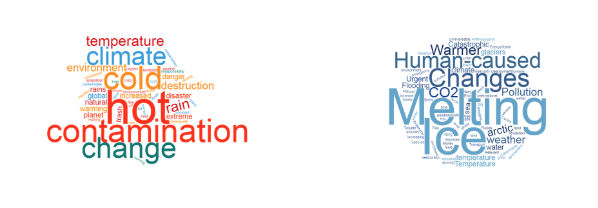This summer, BTL associate professor Sehoya Cotner and postdoctoral associate Lorelei Patrick were part of a group of ecologists involved in a science communication project on climate change. During this project, ecologists conducted a data "blitz" in order to track vegetation changes in Longyearbyen, Norway. Additionally, they asked residents of the town a series of questions regarding their perceptions of climate change. They shared their findings with the community in the form of a letter to the editor of Svalbard Posten, the world’s northernmost newspaper.
Take a look at the original version or keep reading to see a translated version.
To the Editor:
Svalbard residents know how appealing the islands are, and how enchanted visitors find the mountains, glaciers, and potential for polar-bear sightings. They are also very aware that Svalbard is seen as a harbinger for climate-change. Around the world, scientists are eyeing Svalbard to understand how this unique Arctic landscape and people will adapt—or not—to an increase in global temperatures.
It was therefore with considerable excitement that an international group of ecology graduate students attended a field course hosted by UNiS in Longyearbyen in July 2018. This course — The Plant Functional Traits Course (PFTC) brings plant ecologists together for a data “blitz”, to collect a large amount of data in a short period of time. Similar courses have convened in China and Peru, but none in a location so synonymous with change. Because the Arctic is warming faster and changing more rapidly than the rest of the planet, scientists anticipate increasing snow and ice melt and vegetation changes that will affect local ecosystems and people.
Twenty-two students from 11 countries, working with 14 University faculty and researchers from 5 countries climbed the slopes of Platåberget and Sukkertoppen to measure the growth, nutrient content, and physiology of thousands of native plants. These ‘traits’ are the window through which scientists can predict and view what the future of these Arctic landscapes will look like. The students studied plants across elevation and nutrient gradients, to better understand how these environmental factors influence the plants and their leaves. The teams also used drones to map these gradients, so that we can see what the vegetation looks like at the landscape level. Our drones are basically mini-satellites, so if the drone technology works, we could use actual satellites to map vegetation changes at global scales.
The students were also interested in how local residents perceive climate change. We had previously surveyed local people in Cusco and Paucartambo, two Andean towns in Peru, and we now asked the same questions to the inhabitants of Longyearbyen. If you were one of the people who took time out of their day to complete our survey, thank you!
So, how do people in Longyearbyen view climate change? And how do these views compare to survey participants in Peru?
- 91% of the people we surveyed in Longyearbyen knew that carbon dioxide causes Earth’s temperatures to rise; 76% of the Peruvianrespondents knew this
- Australia has the highest per capita carbon dioxide emissions; most people in both Longyearbyen and Peru thought China or the US had the highest emissions
- Humans contribute to climate change by burning fossil fuels, burning forests, and through methane from livestock; 40% of the respondents in Longyearbyen identified all three causes whereas 20% of Peruvian respondents identified all three.
These results show that people in Longyearbyen are more knowledgeable about the causes of climate change. But people in both Peru and Longyearbyen overwhelmingly acknowledge that climate change is happening and that it directly influences their daily lives, but in very different ways. This is illustrated in the words people in Peru and Svalbard use when they think of climate change:

Most people in Longyearbyen felt that they contributed to climate change and were willing to change some aspects of their behavior to reduce their impact on the climate. However, some had concerns about how to do so because many of the common recommendations for reducing one’s carbon footprint, like planting trees or switching to renewable energy sources, are not feasible in Longyearbyen.
As visitors to Longyearbyen this summer we realize that while the per capita carbon footprint of Svalbard inhabitants is relatively high, the current climate-change crisis is not the result of the ~2800 inhabitants in a few small Arctic towns and villages. This dichotomy—between who creates the mess and who feels most of its impact—is something we continue to discuss with our students. We hope they will carry this message home and initiate meaningful, informed dialogue on how people around the world can respond to the threat of climate change.
Sincerely,
Dr. Lorelei Patrick (University of Minnesota)
Dr. Sehoya Cotner (University of Minnesota)
Dr. Vigdis Vandvik (University of Bergen)
Dr. Brian Enquist (University of Arizona)
The Plant Functional Traits Course participants